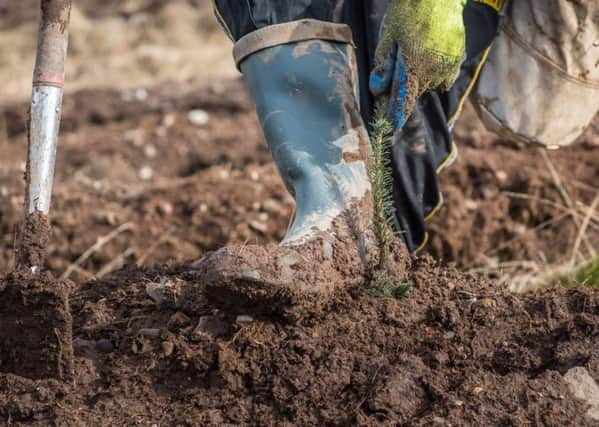Trees can help tackle climate change so think globally and plant locally – Stuart Goodall


It’s great news that Glasgow is to host a UN climate summit at the end of 2020. It’s also very fitting – Scotland passed world-leading climate legislation a decade ago and in April, Nicola Sturgeon declared a climate emergency, pledging to speed up efforts to achieve zero carbon emissions.
Since then, Scotland has smashed its tree planting target for the first time and the Scottish Government has raised its target to 12,000 hectares for the coming year.
Advertisement
Hide AdAdvertisement
Hide AdThe 26th Conference of the Parties, or COP26, is designed to produce an international response to the climate emergency and Scotland has the opportunity to showcase how tree planting and using more wood can play a very significant role in delivering zero carbon emissions.


We have been here before. In 2017, I was privileged to speak alongside Forestry Minister Fergus Ewing when Edinburgh welcomed environmental organisations from around the world, working together to tackle illegal logging and climate change through creating new forests.
They were here to see Scotland’s commitment to tree planting in action and how we manage those forests sustainably, abiding by comprehensive, world-leading standards that other industries don’t come close to matching.
This New Generation Plantation network is led by WWF, and we’ve also sought to work with other environmental bodies, most recently Friends of the Earth, to explore how we can communicate the benefits of planting more trees and replacing energy-intensive materials like steel and concrete with sustainably grown, low carbon wood.
I occasionally still hear the argument that Scotland shouldn’t set itself ambitious targets or seek to be a world leader as our share of global emissions are so small. The fact is that without leaders everyone will hold back, and Scotland has the ability to showcase good practice – to think global and plant local.
The Committee on Climate Change (CCC), independent adviser to the Scottish Government on climate issues, has stressed repeatedly that reducing emissions is not enough and that removing atmospheric carbon is crucial to making a real difference.
The CCC describes tree planting and wood use as a “simple, low-cost option” to removing carbon from the atmosphere. Tree planting captures carbon and making wood products stores it, which makes our industry the most effective AND cost-effective method of carbon capture and storage. In the year to 31 March 2019, Scotland planted just over 11,200 hectares of new woods and forests. This represented more than 80 per cent of the entire planting in the UK, as England, Wales and Northern Ireland fell behind their own modest ambitions.
One gratifying aspect of the Scottish planting success was the variety of forests and woodland created. Almost 50 per cent of the 11,200 hectares was made up of smaller parcels of woodland of 50 hectares or under, many of them planted by farmers looking to diversify their business.
Advertisement
Hide AdAdvertisement
Hide AdTrees and sheep (and other livestock) can mix well. Trees planted on farms deliver shelter for animals from harsh Scottish winters, improving their health and welfare – then provide a short and medium-term income from thinning trees and a longer-term income when the trees mature.
Another interesting aspect is that the larger Scottish schemes are pretty much 50:50 native: productive woodland. This mixed future is key to delivering on the climate change agenda, but also in reducing flood risks, enhancing biodiversity and providing places for people to both work and enjoy nature.
Healthy debate should be based on facts rather than assumptions, especially when we’re talking about global challenges like climate change and nature. Unfortunately too much of what I read from those still opposed to tree planting, especially new productive woodland, is based on what is, at best, anecdotal evidence.
The facts are that modern forestry is built on small and large woodlands, with a mixture of species. Productive trees must be part of that to make the day-to-day products we all use, including embedding carbon in the timber frames of new homes. We must also reduce our reliance on timber imports and stop exporting our forest footprint. Those who claim to care for our environment really need to think about that.
They also need to consider Scottish Forestry Minister Fergus Ewing’s comments that tree planting in Scotland must be a shared national endeavour. At a time when forestry is delivering for our environment, economy and society, let’s celebrate this positive success story – and carry it through to COP26 to make a real difference to the future, by thinking global and planting local.
Stuart Goodall is CEO of Confor: promoting forestry and wood